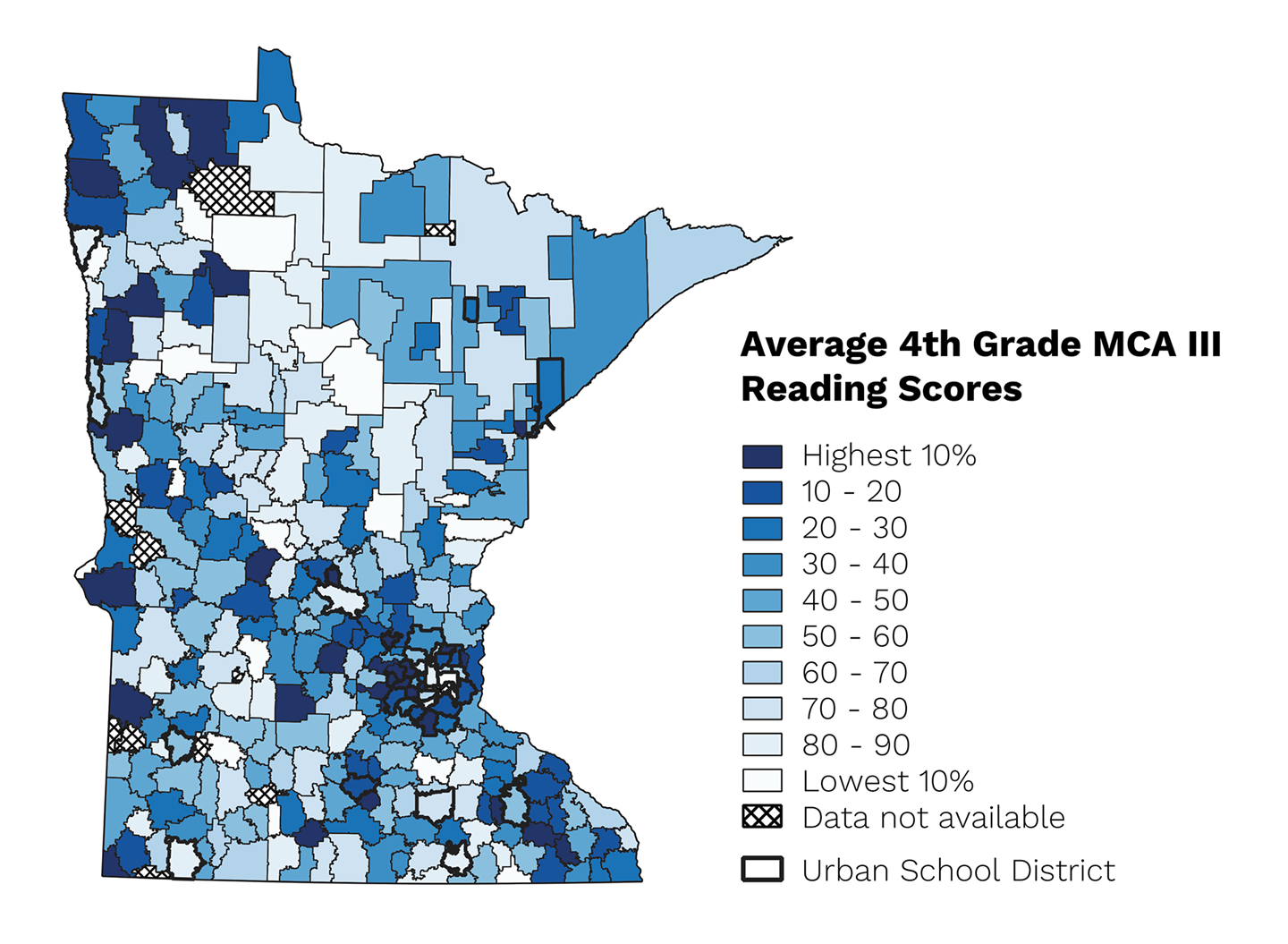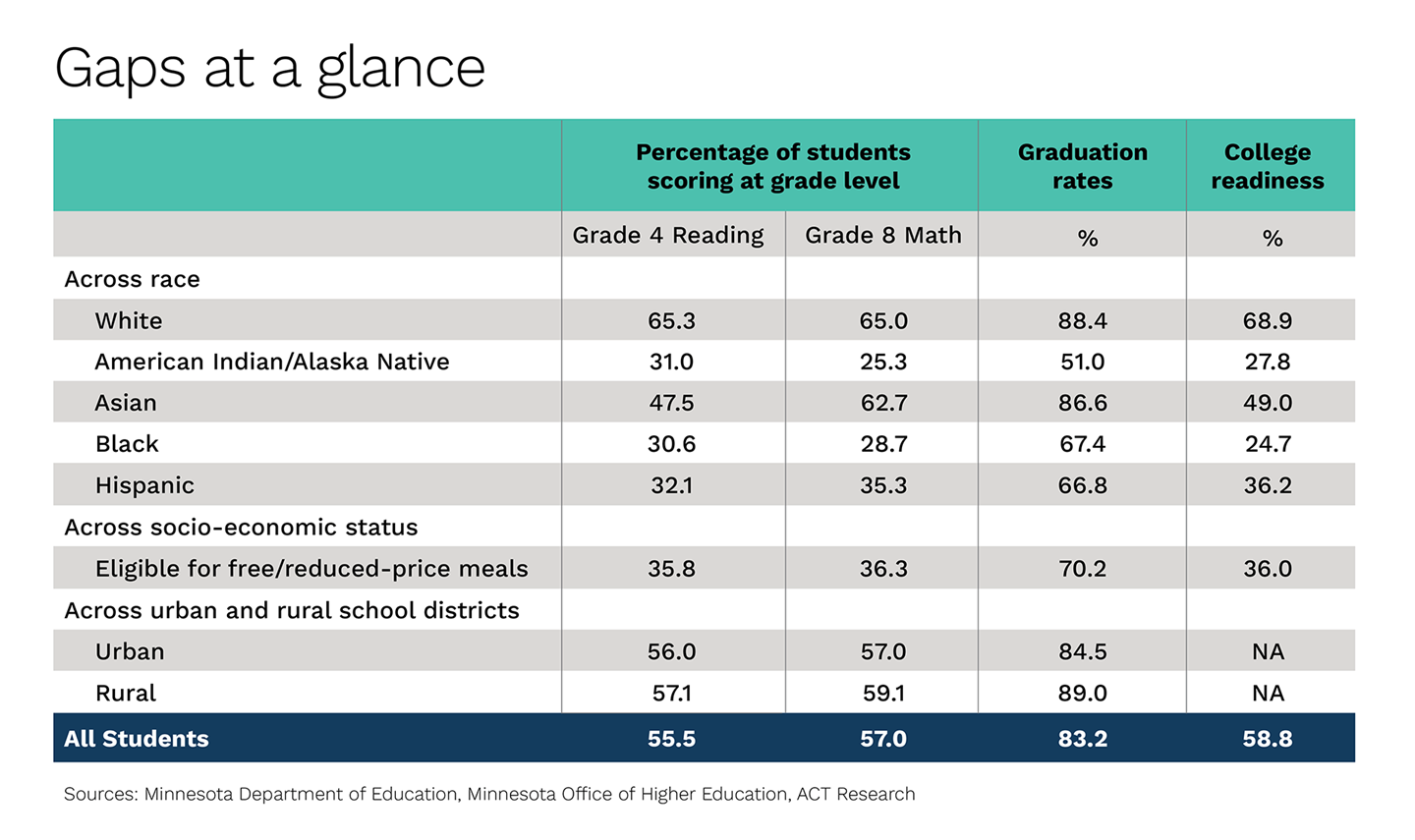In a new report from the Federal Reserve Bank of Minneapolis examining Minnesota’s persistent education achievement gaps, economists Rob Grunewald and Anusha Nath underscore a statewide crisis: Our educational disparities are deep, wide and persistent.
Specifically, the report documents the crisis:
-
Minnesota has some of the largest gaps in the nation on outcome measures by race and socioeconomic status.
-
Our educational disparities are not confined to race; low- income white students significantly trail higher-income white students across Minnesota.
-
Disparities span all parts of the state and all types of schools, whether district or charter schools. This is not just a metro issue or a traditional public school issue.
-
Achievement gaps are evident across a variety of measures, including standardized test scores, graduation rates, and college readiness indicators.
-
Racial and income gaps in standardized test scores and college readiness have increased over time, while gaps in graduation rates have decreased.
-
Minnesota is graduating an increasing proportion of students who are unprepared for college.

Minnesota’s education achievement gaps across race and socioeconomic status have persisted for decades despite our state implementing policies to promote equal opportunity for education, including school choice, changes in teacher compensation and evaluation systems, and equalizing per capita funding across districts.
There is hope
Despite Minnesota’s failure to close its achievement gaps, there is hope. The report highlights other places in the nation that have improved outcomes for children of color and low-income students. These examples indicate that closing achievement gaps is challenging, but possible.
Common themes across these success stories include:
-
Giving schools greater autonomy to lead by implementing locally relevant programs and attracting, developing, and retaining high-quality teachers.
-
Focusing on school quality, such as using data and teacher coaching to improve instruction.
- Supporting students and families through individualized services.

Download the full report.
